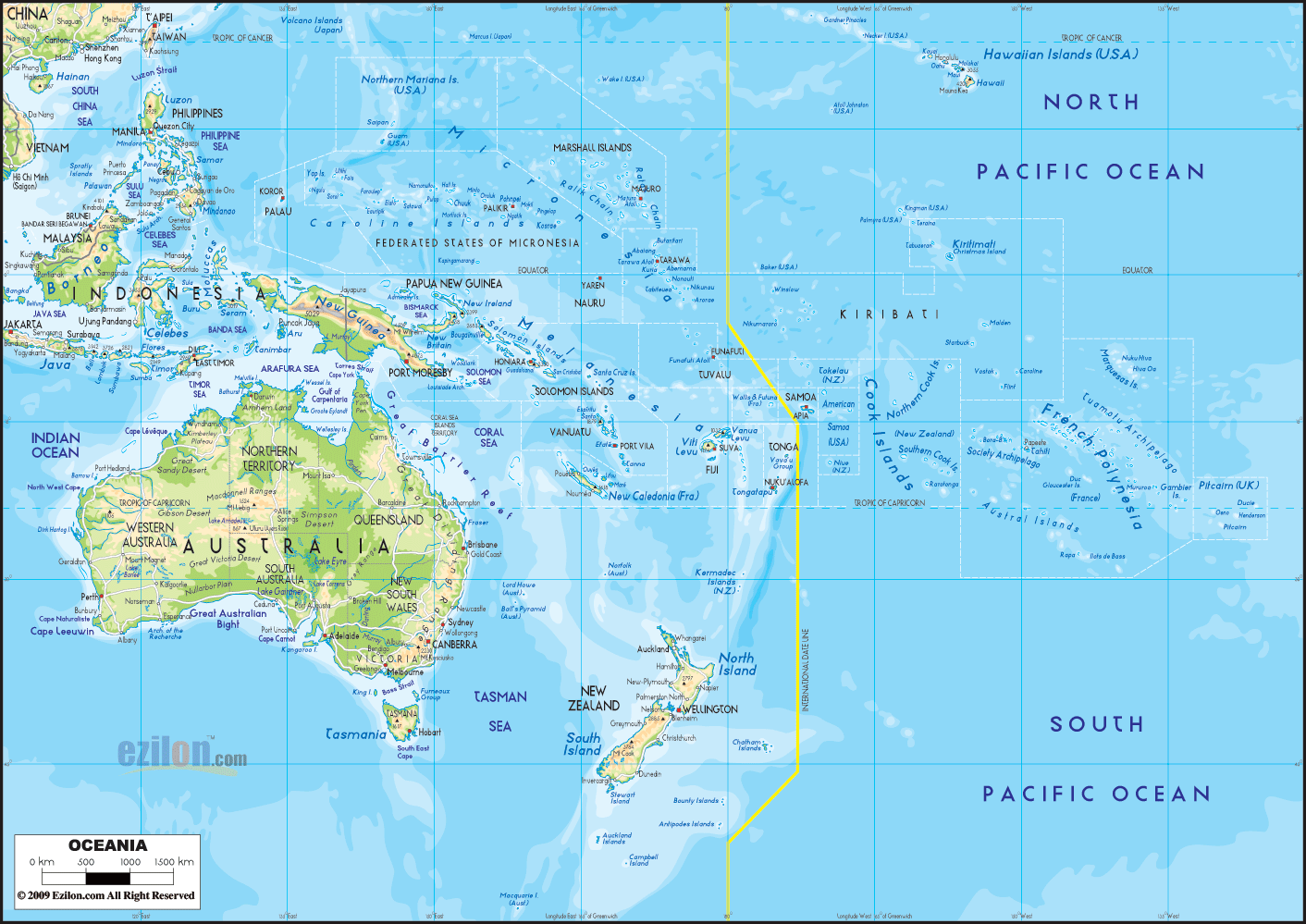Big Ocean-small Islands
Songs and sailors
 The Pacific Ocean covers a third of the world's surface.
It is over 10,000 km wide and over 10,000 metres deep in places. It is
dotted with
groups of
islands, few of which are more than
100 km long.
The Pacific Ocean covers a third of the world's surface.
It is over 10,000 km wide and over 10,000 metres deep in places. It is
dotted with
groups of
islands, few of which are more than
100 km long.
The first people arrived on the Asian mainland about 45,000 years ago. But it was only in the last 5,000 years that they spread across the Pacific.
The first European explorers, like Louis de Bougainville and James Cook, reached the South Pacific about 200 years ago. They found widely scattered islands, low coral atolls, and high, active volcanoes.
The inhabitants had a strong oral, rather than written culture, which was passed down the generations through songs. There were chants to remind people when to plant crops, how to catch fish and to tell the stories of great adventurers. The old people of the islands were a wealth of information and wisdom, which they passed on to their children and grandchildren.
A Thousand Island
There are three main groups of islands in the South Pacific. These are some of the main islands of each group.
Polynesia
American Samoa The location of an important American naval base.
Cook Islands Named after Captain Cook. They are famous for the rare black pearls found there.
Samoa Home of the British writer Robert Louis Stevenson, who wrote the children's classic Treasure Island.
Tahiti A French territory. Paul Gaugin, the artist, lived and painted there.
Tonga The region's only kingdom, ruled by King Taufa'ahau Tupou IV. Micronesia
Kiribati A chain of atolls on the equator. It became independent from Britain in 1978.
Nauru Phosphate mines have made the people of the island rich, but their land has been destroyed.
Marshall Islands There is a strong American influence. The atomic bomb was tested at Bikini Atoll. Other islands were also used for American nuclear tests. Melanesia
Fiji The only Melanesian country ruled by Polynesian-style chiefs.
Papua New Guinea (PNG) The biggest South Pacific country. It shares an island with Indonesian Irian Jaya.
Solomon Islands Valuable timber and gold are commercially exploited.
Vanuatu These islands were jointly run by Britain and France until independence in 1980.
The Way the World Should Be
The way the world should be," was the tourist board slogan of Fiji until 1987. After a period of internal strife, it is true once again. When Fiji became a colony in 1874, the British started bringing Indian farmers to the island to work on the sugar, plantations. Today, Indians make up half the population, and generally dominate business and the professions. By contrast, the native Fijians own the land, and have traditionally been ruled by the Great Council of Chiefs.
When a mainly Indian political party won the 1987 elections, a Fijian soldier, Major-General Rabuka, took over the government and installed a new constitution which gave preference to the Fijian community. As a result, Fiji was forced to leave the Commonwealth. There was some fighting, and many Indians emigrated to Canada, New Zealand and Australia, causing damage to the economy. Ten years later, Rabuka introduced a new constitution, giving equal representation to both communities. Harmony and trust between the two peoples seem to have been restored.
English and Pidgin
English-speakers can find their way round any South Pacific town, unless of course they are in the French territories of New Caledonia or Tahiti.
The Polynesian countries all have their own languages, which are similar, but not fully understood by one another. In Fiji, English is the language of communication between the Hindi-speaking Indians and the Fijians.
The five million people of Melanesia speak over 1,100 languages, almost a quarter of the world's total. For everyday use, each country has its own pidgin, a mixture of English, French or German and local words.
English is taught in those Pacific countries which have, or had links with Britain or the United States. Many people leave the islands to go to work in New Zealand and Australia, where they need English. Most find themselves in low-paid jobs, yet still manage to send money home to their families.
Religion for All
The Polynesians are enthusiastic about religion. In Samoa, people go to church three times on Sundays and to choir practice three times a week. Sunday observance is very strong. In Tonga for example, swimming on a Sunday is considered a criminal offence.
In the last century, Christian missionaries competed to convert the people of the Pacific islands. The Methodists took over Fiji, the Anglicans the Solomon Islands. The Roman Catholics spread more widely over the area. Bahai and Mormon religions are still growing. The islands are predominantly Christian, though local customs and beliefs are often interwoven. Church services frequently include traditional songs and chants.
Once the chief of a community converted to Christianity, his people quickly followed. The result is that religion today has an important influence on Pacific life. Many schools are run by missions.
“In the English-speaking World”